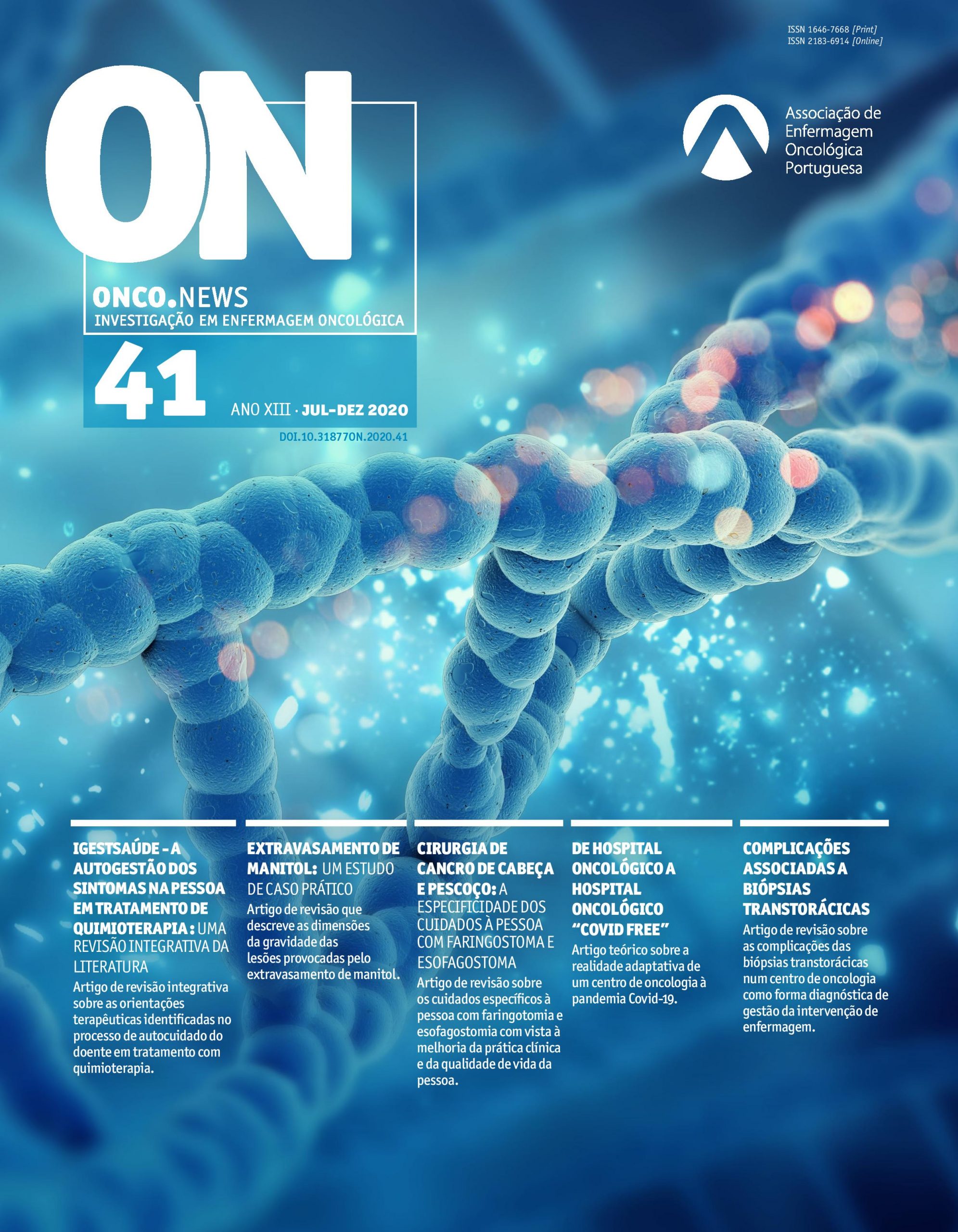Manitol Extravasation: Nursing Case Report
Keywords:
Vesicant extravasation, mannitol, nursing, hyaluronidaseAbstract
Several drugs have the potential to cause tissue damage if extravasation occurs. The severity of extravasation and the size of the lesion are dependent on a number of factors such as the dose of the drug, its concentration, place of administration and length of drug exposure. Prevention is the most effective form of management in case of an extravasation/ leakage. If an overflow occurs it is crucial to adopt a suitable set of measures/protocol not only to manage the overflow but to minimize the resulting damage. The most frequently reported extravasation lesions unrelated to chemotherapy administration are caused by hyperosmolar solutions and vasopressor agents. Hyaluronidase is the antidote to hyperosmolar drugs and its administration is important in preventing tissue damage due to extravasation.
Downloads
References
Direção Geral da Saúde (2017). Programa Nacional para as Doenças Oncológicas. Lisboa: DGS; 24p.
National Cancer Institute (2018). Types of Cancer Treatment [em linha] (consult. 19/11/2019) United States: NCI. Disponível em https://www.cancer.gov/about-cancer/treatment/types.
Devaud, J.C; Sigrist T.; Zaugg, C et al (2012). Proposition d’une marche à suivre pour la gestion et la prévention d’extravasation d’agents non cytotoxiques. Pharmactuel 45(2):132-136.
ESMO Guidelines Working Group (2012) - Management of chemotherapy extravasation. ESMO–EONS Clinical Practice Guidelines. Annals of Oncology 23 (Supplement 7): vii167–vii173.
Coyle C, Griffie J, Czaplewski L. (2014). Eliminating extravasation events: A multidisciplinary approach. Journal of Infusion Nursing 37:157-64.
Schulmeister L. (2011). Vesicant chemotherapy extravasation management. British Journal of Nursing
:6-12.
Schulmeister L. (2011). Extravasation management: clinical update. Seminars in Oncology Nursing. 27(1), 82-90.
Saldanha, MJM (2014). Normas de atuação em caso de extravasão de medicamentos intravenosos vesicantes não citotóxicos. [em linha] (consult. 19/11/2019) Mestrado Integrado em Ciências Farmacêuticas. Disponível em http://hdl.handle.net/10400.6/5188.
Edwards JJ, Samuels D., FU ES (2003). Forearm compartment syndrome from intravenous mannitol
extravasation during general anesthesia. Anesthesia & Analgesia, 97:1195-1207.
European Oncology Nursing Cociety - EONS (2008). European Oncology Nursing Society extravasation guidelines. European Journal of Oncology Nursing 12(4):357-361.
Kumar, Matthew M., MD; Sprung, Juraj, MD (2003). The use of hyaluronidase to treat mannitol extravasation. Anesthesia & Analgesia 97(4):1199-1200.
Lawson SL, Brady W, Mahmoud A (2013). Identification of highly concentrated dextrose solution (50% dextrose) extravasation and treatment – a clinical report. American Journal of Emergency Medicine 31(5): 886.e3-886.e5.
LE A, Patel S (2014). Extravasation of noncytotoxic drugs: A review of the literature. Annals of Pharmacotherapy 48(7):870-886.
University of Wisconsin Hospitals and Clinics Authority (2015). Guideline for Non-Chemotherapeutic Agents: Prevention and Treatment of Chemical Phlebitis and Extravasation of Peripherally Administered Nonchemotherapeutic Agents – Adult/Pediatric–Inpatient Clinical Practice Guideline. UWHealth, 22p.
Friedrich JB, Shin AY (2012). Management of forearm compartment syndrome. Critical Care Nursing Clinics of North America 24(2):261– 274.
Doellman D, Hadaway L, Bowe-Geddes LA et al (2009). Infiltration and extravasation: update on prevention and management. Journal of Infusion Nursing 32(4):203-211.
Downloads
Published
How to Cite
Issue
Section
License
Copyright (c) 2020 Ana Catarina Vieira Almeida , Heidi de Jesus Faísca Salvado, Liliana Dias Pereira

This work is licensed under a Creative Commons Attribution-NonCommercial-ShareAlike 4.0 International License.




